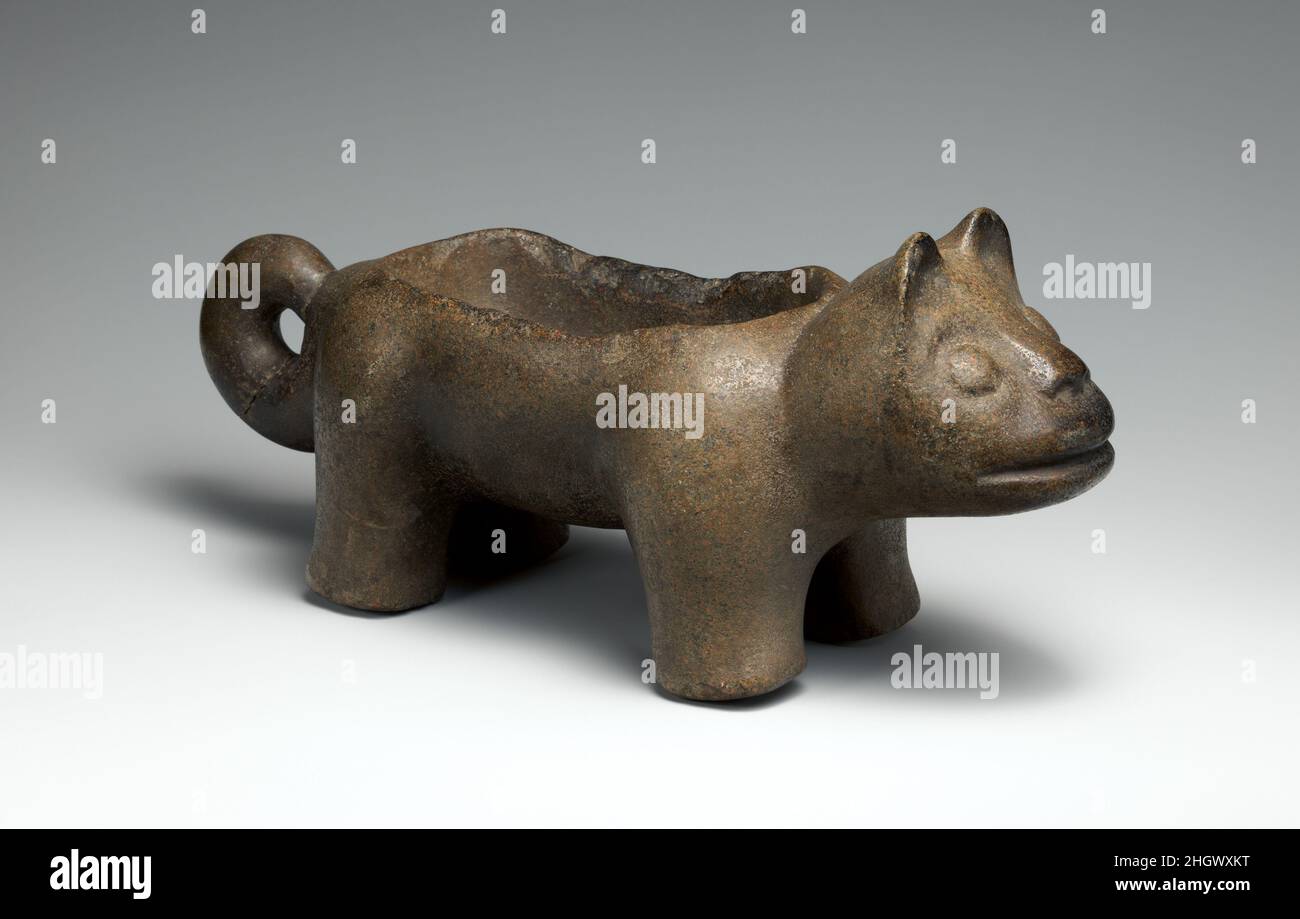Mortar in the form of a feline 700–400 B.C. Alamito This zoomorphic mortar is in the shape of a four-legged feline sculpted in the round and with a deep depression on its dorsal side. The head of the feline contains a deeply-incised mouth, rouded eyes, a pronounced nose that connects to a subtle brow ridge, and pointed ears. The curled tail of the feline forms a loop on the rear of the mortar.The Condorhuasi-Alamito peoples were llama pastoralists in the area that is now the Catamarca province of Argentina. They were skilled artisans in a variety of media, including ceramic, metal, and stone.

Image details
Contributor:
MET/BOT / Alamy Stock PhotoImage ID:
2HGWXKTFile size:
29.2 MB (713.6 KB Compressed download)Releases:
Model - no | Property - noDo I need a release?Dimensions:
4000 x 2552 px | 33.9 x 21.6 cm | 13.3 x 8.5 inches | 300dpiDate taken:
20 January 2022More information:
This image is a public domain image, which means either that copyright has expired in the image or the copyright holder has waived their copyright. Alamy charges you a fee for access to the high resolution copy of the image.
This image could have imperfections as it’s either historical or reportage.
Mortar in the form of a feline 700–400 B.C. Alamito This zoomorphic mortar is in the shape of a four-legged feline sculpted in the round and with a deep depression on its dorsal side. The head of the feline contains a deeply-incised mouth, rouded eyes, a pronounced nose that connects to a subtle brow ridge, and pointed ears. The curled tail of the feline forms a loop on the rear of the mortar.The Condorhuasi-Alamito peoples were llama pastoralists in the area that is now the Catamarca province of Argentina. They were skilled artisans in a variety of media, including ceramic, metal, and stone. Archaeological evidence suggests that the Condorhuasi-Alamito peoples maintained extensive long-distance contacts with other regions, including the important site of Tiwanaku, near Lake Titicaca in what is now Bolivia.. Mortar in the form of a feline. Alamito. 700–400 B.C.. Basalt. Argentina. Stone-Vessels